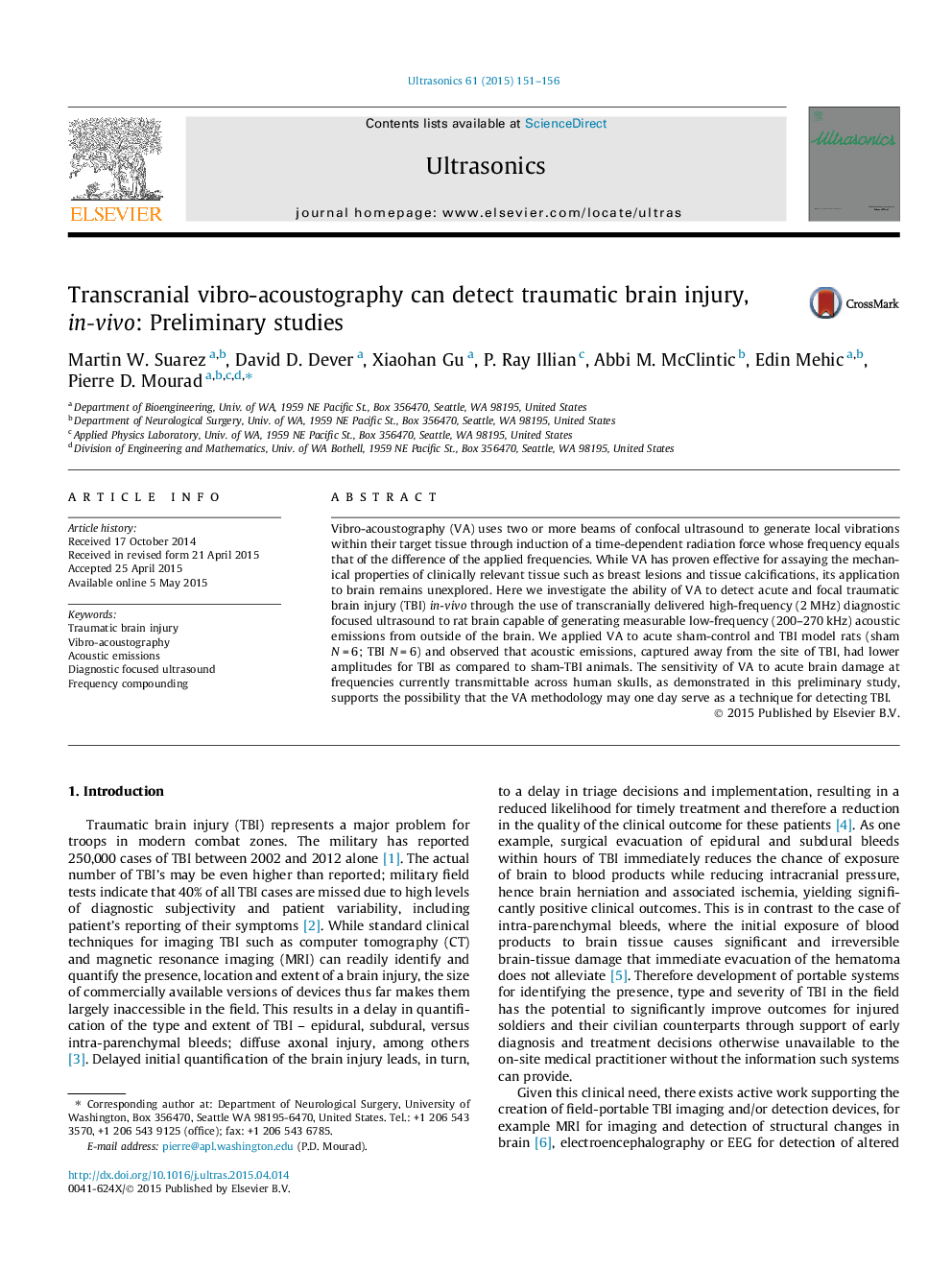| Article ID | Journal | Published Year | Pages | File Type |
|---|---|---|---|---|
| 1758689 | Ultrasonics | 2015 | 6 Pages |
•Traumatic brain injury (TBI) outcomes are improved with fast diagnosis.•Current TBI diagnostic techniques are accurate, but large and expensive.•Ultrasound Vibro-acoustography is portable, cheap, and can detect tissue properties.•Vibro-acoustography generates different signals in injured vs uninjured brain.•Vibro-acoustography may eventually help detect TBI in military and civilian trauma.
Vibro-acoustography (VA) uses two or more beams of confocal ultrasound to generate local vibrations within their target tissue through induction of a time-dependent radiation force whose frequency equals that of the difference of the applied frequencies. While VA has proven effective for assaying the mechanical properties of clinically relevant tissue such as breast lesions and tissue calcifications, its application to brain remains unexplored. Here we investigate the ability of VA to detect acute and focal traumatic brain injury (TBI) in-vivo through the use of transcranially delivered high-frequency (2 MHz) diagnostic focused ultrasound to rat brain capable of generating measurable low-frequency (200–270 kHz) acoustic emissions from outside of the brain. We applied VA to acute sham-control and TBI model rats (sham N = 6; TBI N = 6) and observed that acoustic emissions, captured away from the site of TBI, had lower amplitudes for TBI as compared to sham-TBI animals. The sensitivity of VA to acute brain damage at frequencies currently transmittable across human skulls, as demonstrated in this preliminary study, supports the possibility that the VA methodology may one day serve as a technique for detecting TBI.
